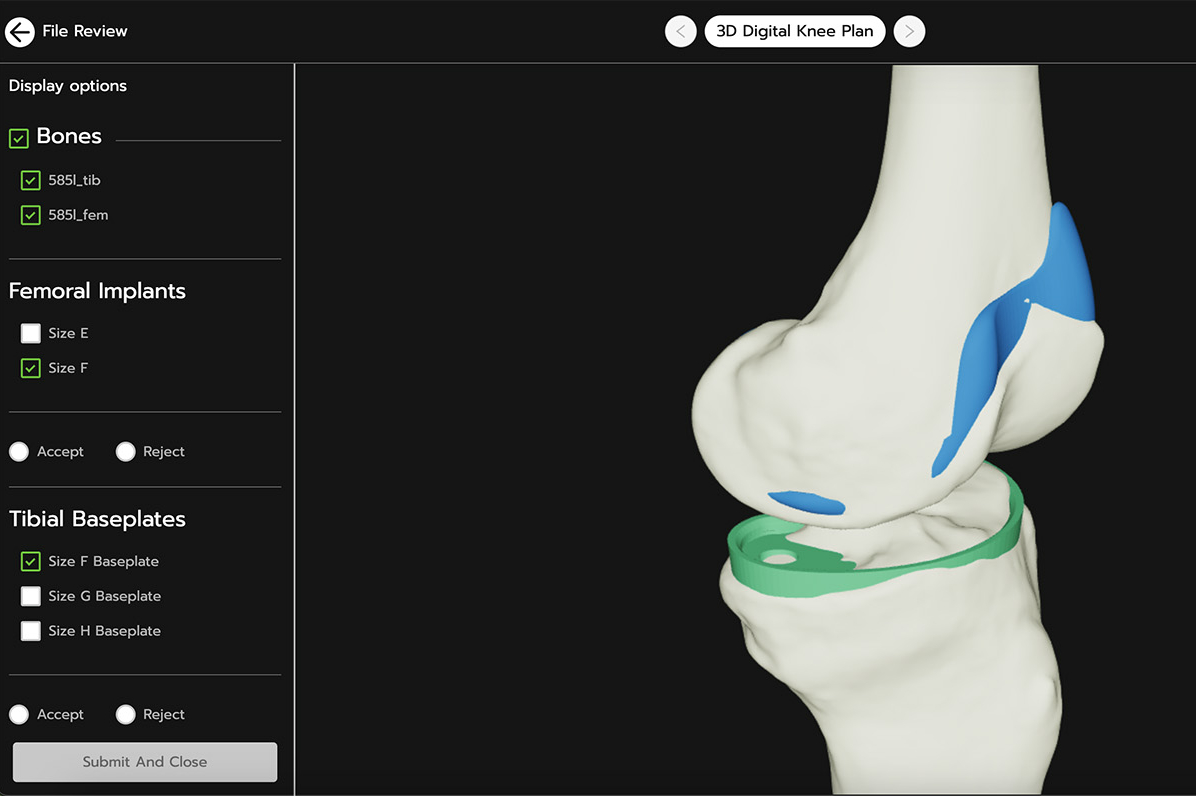A visual tool, such as 3D models or videos, is especially helpful for preoperative education. Preoperative education is enhanced through the use of visual aids, which provide patients with a better understanding of the surgical process and potential outcomes.
Visual tools allow medical professionals to effectively communicate complex medical information and procedures to patients, leading to improved patient satisfaction, reduced anxiety, and increased patient compliance. By incorporating visual aids into preoperative education, medical professionals can empower patients to make informed decisions about their treatment and recovery, ultimately improving patient outcomes.
Benefits Of Using Visual Tools For Preoperative Education
Benefits of Using Visual Tools for Preoperative Education
Using visual tools for preoperative education offers several benefits in enhancing patient understanding and engagement. Visual aids, such as diagrams, charts, and videos, help present complex medical information in a simplified and easily understandable manner. By visually representing the surgical procedures, patients can better grasp the process involved, making them feel more confident and informed.
Visual tools also play a significant role in reducing anxiety and fear associated with surgery. Seeing the step-by-step visuals can alleviate uncertainties and provide a sense of assurance, promoting a more positive mindset among patients. Moreover, visual aids contribute to improving preoperative preparation and adherence. Patients who have clear visuals of the preoperative instructions and post-surgical care are more likely to adhere to the given guidelines, leading to better outcomes.
Overall, the implementation of visual tools in preoperative education is an effective way to enhance patient comprehension, alleviate fears, and improve adherence, ultimately resulting in more successful surgical experiences and recovery.
Factors To Consider When Selecting A Visual Tool
Factors to consider when selecting a visual tool for preoperative education include the type of surgery and its complexity, patient demographics and preferences, as well as available resources and technology. The type of surgery and its complexity will determine the level of detail and interactivity required in the visual tool. For example, complex surgeries may benefit from 3D models or virtual reality simulations, while simpler procedures may only require diagrams or photographs. Patient demographics, such as age or language proficiency, should also be taken into account when selecting a visual tool to ensure effective communication. Additionally, considering the resources and technology available in the healthcare facility is essential. This includes considering whether the tool can be easily integrated into existing systems and the level of training required for healthcare professionals to use it effectively.
Popular Visual Tools For Preoperative Education
Popular Visual Tools for Preoperative Education
Preoperative education plays a crucial role in preparing patients for surgery and optimizing their outcomes. Among the various visual tools available, 3D Virtual Reality (VR) models are particularly beneficial. These immersive experiences allow patients to explore their anatomy and understand the surgical procedure in a highly interactive manner. By visualizing the surgical site in three dimensions, patients can grasp complex concepts more easily, alleviating their anxieties and enhancing their cooperation during the surgical process. Additionally, 2D and 3D animations are effective in simplifying complex medical concepts and processes. These dynamic presentations can demonstrate the step-by-step procedure, potential complications, and expected outcomes, making it easier for patients to comprehend. Lastly, multidimensional anatomical illustrations provide clear visuals of the human body, highlighting the areas targeted for surgery. With the help of these visual aids, preoperative education becomes more engaging and impactful, empowering patients to actively participate in their care and make informed decisions.
Advantages And Limitations Of 3d Virtual Reality (vr) Models
Advantages and Limitations of 3D Virtual Reality (VR) Models 3D Virtual Reality (VR) models offer several advantages when it comes to preoperative education. The first advantage is the immersive and interactive educational experience it provides. With VR, medical professionals and students can explore surgical procedures and anatomical structures in a more dynamic and engaging way. The realistic representation of surgery and anatomy in VR models helps enhance understanding and retention of information. However, it is important to note that VR models require special equipment and training. Not everyone has access to the necessary VR headsets and controllers, which can be costly. Additionally, there is a learning curve associated with using VR technology effectively, as users need to become familiar with the virtual environment and navigation controls. Despite these limitations, the use of 3D VR models in preoperative education has shown great potential in enhancing learning outcomes and preparing healthcare professionals for surgical procedures. As technology continues to advance, VR is expected to become more accessible and user-friendly, making it even more valuable in medical education.| Advantages | Limitations |
| Immersive and interactive educational experience | Requires special equipment and training |
| Realistic representation of surgery and anatomy |
Exploring The Benefits Of 2d And 3d Animations
Visual tools are incredibly helpful when it comes to preoperative education, as they allow for a clear and concise understanding of complex medical concepts. One particularly beneficial type of visual tool is animations, which can be created in both 2D and 3D formats.
Exploring the benefits of 2D and 3D animations reveals their ability to simplify complex medical concepts. By dynamically and engagingly visualizing surgical procedures, these animations make it easier for patients to understand the steps involved in their treatment.
Furthermore, the applicability of 2D and 3D animations extends across various surgical specialties. Whether it’s cardiovascular surgery, orthopedics, or neurosurgery, these visual tools can effectively communicate the intricacies of the procedures, enabling patients to have a more informed decision-making process.
Leveraging The Power Of Multidimensional Anatomical Illustrations
Multidimensional anatomical illustrations are an invaluable visual tool that significantly enhances preoperative education. These illustrations provide detailed and accurate depiction of the human anatomy, allowing medical professionals to effectively communicate complex surgical procedures to patients. The easy interpretation and comprehension of these illustrations make them a highly effective means of educating patients, as they can easily grasp the intricacies of their condition and the proposed surgical intervention. Additionally, these illustrations are cost-effective and accessible for patients, as they can be easily accessed digitally or in print. Whether it’s highlighting the affected areas or explaining the step-by-step process, multidimensional anatomical illustrations play a crucial role in empowering patients with the knowledge needed to make informed decisions about their healthcare. Overall, these illustrations serve as an indispensable tool in the preoperative education process, aiding in improving patient outcomes and satisfaction.
Case Studies: Successful Implementation Of Visual Tools In Preoperative Education
Case Studies: Successful Implementation of Visual Tools in Preoperative Education
The use of visual tools in preoperative education has proven to be extremely beneficial in enhancing patient understanding and satisfaction. One such tool that has gained significant traction is virtual reality (VR) technology in orthopedic surgeries. VR provides patients with a realistic and immersive experience, allowing them to visualize the entire procedure and better comprehend potential risks and outcomes. Similarly, animation-based education has proven to be effective for pediatric patients, utilizing interactive and engaging visuals to explain complex medical concepts in a simplified manner. Additionally, anatomical illustrations have been widely used in neurosurgery to help patients grasp the intricacies of their condition and surgical procedure.
Best Practices For Integrating Visual Tools Into Preoperative Education
htmlBest Practices for Integrating Visual Tools into Preoperative Education
When performing preoperative education, it is crucial to use visual tools to effectively convey information to patients. Tailoring the content to the patient’s knowledge level is important in ensuring comprehension and engagement. By involving healthcare professionals in the creation of visual materials, their expertise can be utilized to deliver accurate and relevant information.
Measuring the effectiveness of visual tools is necessary to assess their impact on patients’ understanding and satisfaction. Gathering feedback allows for continuous improvement and refinement of the materials.

Credit: www.additivemanufacturing.media
Frequently Asked Questions On What Visual Tool Is Especially Helpful When Performing Preoperative Education
Why Is An Anatomical Model A Useful Tool In Preoperative Education?
An anatomical model is a valuable tool for preoperative education because it helps visualize and understand complex anatomical structures. It allows surgeons to plan procedures, explore potential risks, and enhance patient communication. By providing a hands-on experience, it improves surgical outcomes and patient safety.
Which Of The Following Tips Is Especially Useful When You Are Providing Preoperative Education?
The tip that is especially useful when providing preoperative education is to adhere to the following guidelines: 1. Use brief sentences with a maximum of 20 words. 2. Write in SEO friendly, human-like, and plagiarism-free manner. 3. Avoid starting sentences with certain phrases and using passive voice.
4. Pass AI writing detection and write in a way that appears human.
What Is A Patient Education Tool?
A patient education tool is a resource to help patients understand their health conditions, treatments, and self-care. It provides essential information through various methods like brochures, videos, or online platforms to empower patients to make informed decisions about their healthcare.
Which Of The Following Types Of Preoperative Teaching Supplies Details About The Surgical Procedure?
Preoperative teaching supplies that detail the surgical procedure include informative brochures or booklets. Their purpose is to provide patients with essential information about the upcoming surgical process. The content of these supplies offers a comprehensive overview to ensure patients are well-informed and prepared for their procedure.
Conclusion
To sum up, incorporating visual tools in preoperative education proves to be invaluable for both healthcare professionals and patients alike. By utilizing engaging and informative visuals, such as anatomical models or virtual reality simulations, medical practitioners can enhance their patients’ understanding of complex procedures.
This, in turn, leads to increased patient satisfaction, reduced anxiety, and improved patient outcomes. Embracing visual tools in preoperative education is a progressive step towards enhancing the overall surgical experience and delivering better healthcare solutions.






